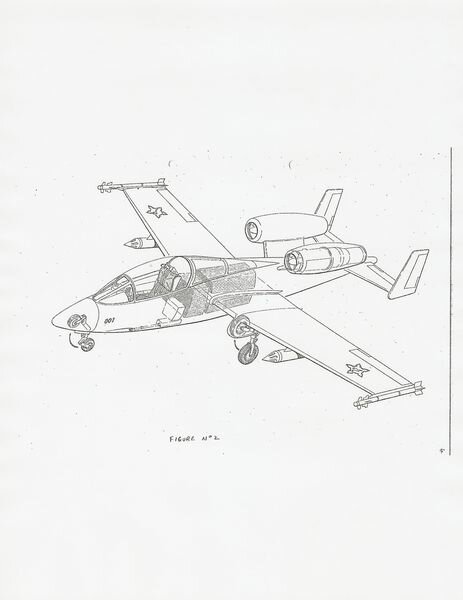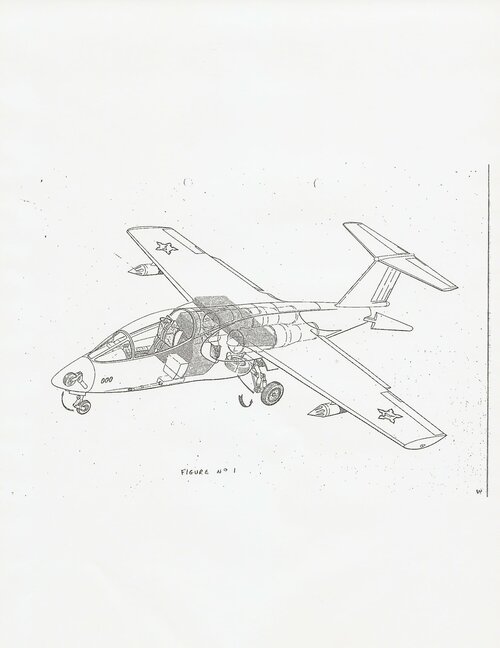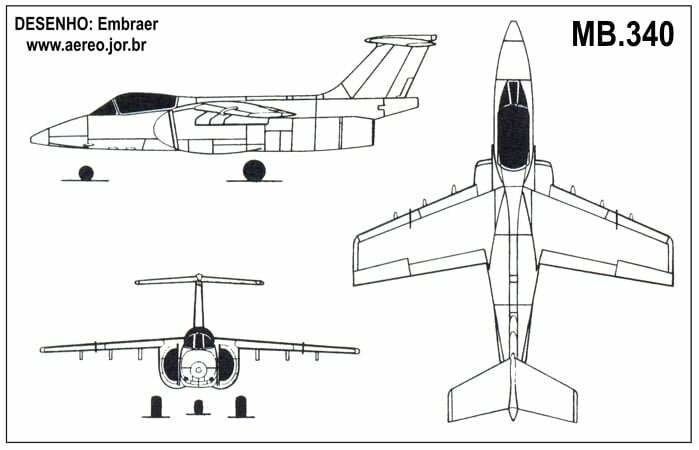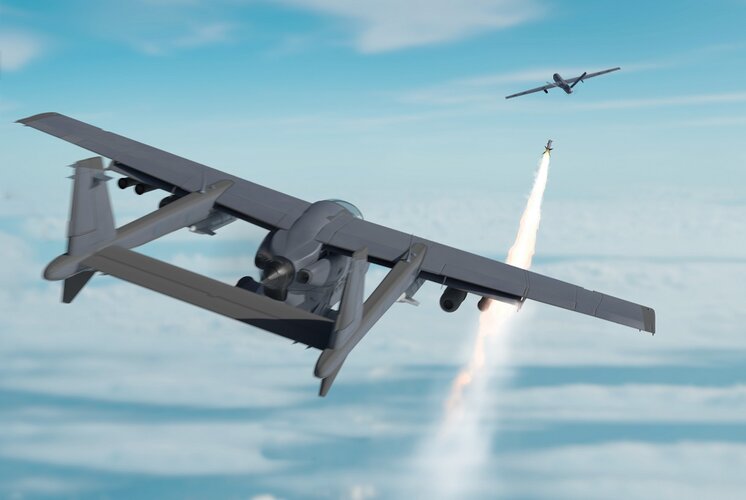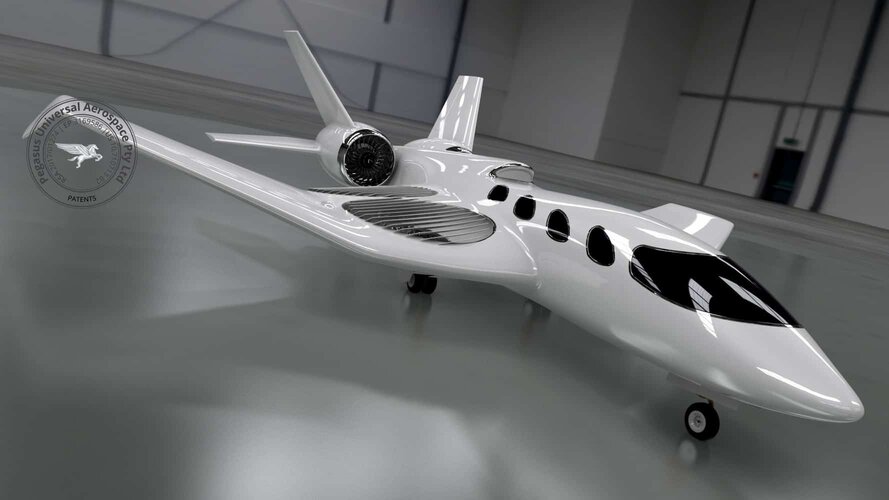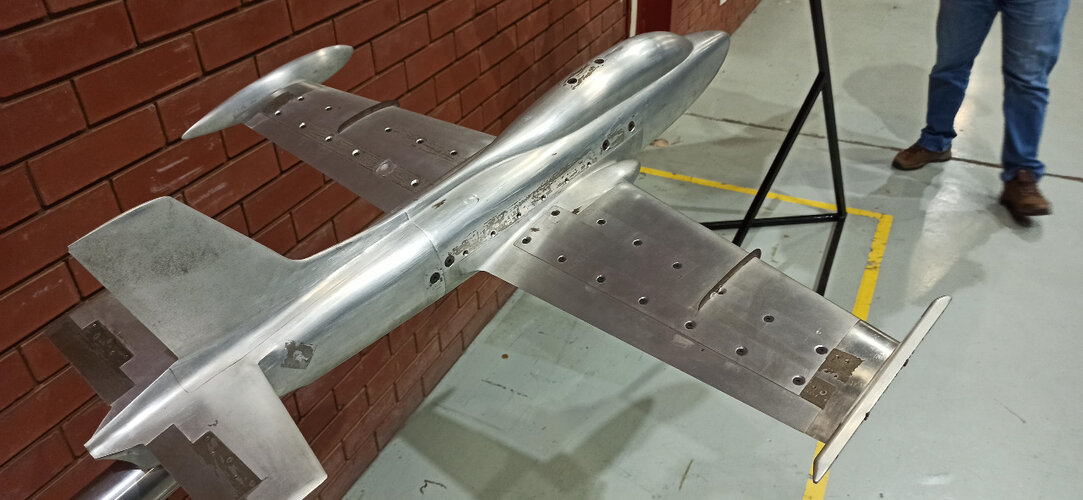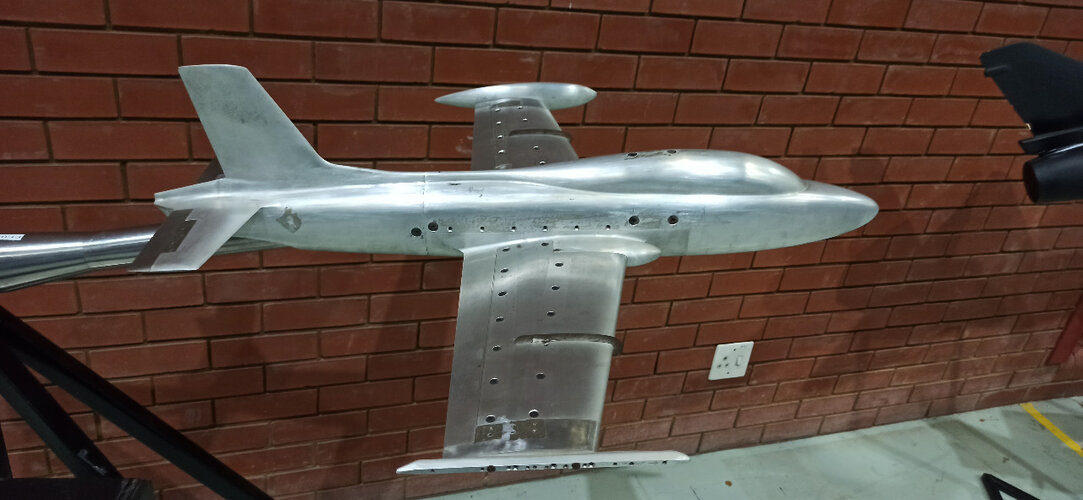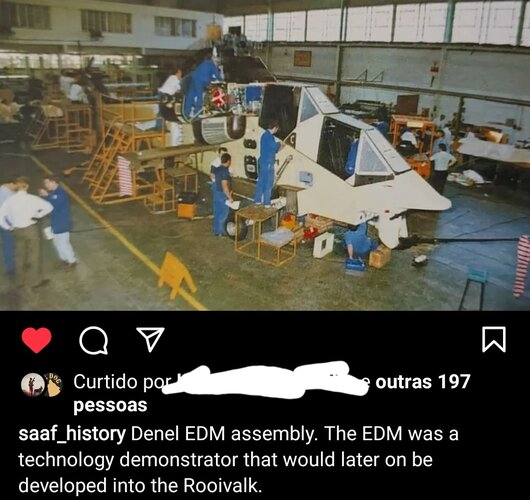You are using an out of date browser. It may not display this or other websites correctly.
You should upgrade or use an alternative browser.
You should upgrade or use an alternative browser.
Various aviation projects from South Africa
- Thread starter kaiserbill
- Start date
- Joined
- 27 March 2006
- Messages
- 1,873
- Reaction score
- 1,619
Not too sure actually, especially if they are current or historical or developments that never saw service. Perhaps a new thread in the Military section under General? Or the Avionics & Naval/Military electronics section in Research Topics?
- Joined
- 27 March 2006
- Messages
- 1,873
- Reaction score
- 1,619
I wonder if you could try and tease some info (or pics!) out on the Facebook site you mention regarding Carver?
You know, to try and get info on some of the questions regarding engine choices, engine development, aerodynamics, chronology....etc...stuff that we have asked here in this thread, and in this one:
It sounds like there are a couple of lads in that group who would have been either in the know, in the industry, or at least known colleagues professionally on the project.
Or any of the projects in this thread actually. Stuff like Impala replacement/further development, that Extended Range Wing project.. The Super Mirage F1 with Cheetah nose and tweaked structures...etc.
A lot of the fellows must be either approaching, or into retirement by now, and might want to open up about their stuff. It would be a shame if the knowledge or experience just fades..
You know, to try and get info on some of the questions regarding engine choices, engine development, aerodynamics, chronology....etc...stuff that we have asked here in this thread, and in this one:
It sounds like there are a couple of lads in that group who would have been either in the know, in the industry, or at least known colleagues professionally on the project.
Or any of the projects in this thread actually. Stuff like Impala replacement/further development, that Extended Range Wing project.. The Super Mirage F1 with Cheetah nose and tweaked structures...etc.
A lot of the fellows must be either approaching, or into retirement by now, and might want to open up about their stuff. It would be a shame if the knowledge or experience just fades..
Last edited:
Graugrun
ACCESS: Top Secret
- Joined
- 17 May 2011
- Messages
- 854
- Reaction score
- 1,195
Kaiserbill, There is someone on that FB page that has posted a lot of material re the radar stations that controlled the SAAF. Where should I post it on the site? I want to get it on the appropriate place.
KwaZulu - this would be the most appropriate thread:
BLACK_MAMBA
ACCESS: Secret
- Joined
- 17 July 2019
- Messages
- 382
- Reaction score
- 879
He was an engineer at Atlas. In charge of the Mirage fleet's upgrades and also looked after the Cheetah D & E. He was in charge for the Cheetah R project and was one of the senior members in the SMR project. He shared some stories of his work on Facebook as is being reposted here.And its Kobus De Villiers again. This guy is a goldmine!
BLACK_MAMBA
ACCESS: Secret
- Joined
- 17 July 2019
- Messages
- 382
- Reaction score
- 879
A lot of them still won't speak. Kobus posted on multiple Facebook groups and Carver has come up, but he wasn't on that project and hasn't divulged anything more than SMR would have been the engine of choice had the program continued into fruition (Carver Engineers were part of the SMR team). I have spoken to at least one engineer who was on Carver but failed to extract much useful information. South Africa doesn't declassify projects automatically so the guys still honour their silence for better or worse.I wonder if you could try and tease some info (or pics!) out on the Facebook site you mention regarding Carver?
You know, to try and get info on some of the questions regarding engine choices, engine development, aerodynamics, chronology....etc...stuff that we have asked here in this thread, and in this one:
It sounds like there are a couple of lads in that group who would have been either in the know, in the industry, or at least known colleagues professionally on the project.
Or any of the projects in this thread actually. Stuff like Impala replacement/further development, that Extended Range Wing project.. The Super Mirage F1 with Cheetah nose and tweaked structures...etc.
A lot of the fellows must be either approaching, or into retirement by now, and might want to open up about their stuff. It would be a shame if the knowledge or experience just fades..
There are a ton of projects floating around. F1's with leading edge extensions, the Impala wing I got a description from an engineer at CSIR and posted here etc. But none of those engineers are willing to talk much, if any. Their secrets will go with them to the grave I'm sorry to say.
These are a compilation of a series of Posts from Doug Hare regarding the Radar coverage and SAAF in Angola
Radio comms between fighter pilots and mission controllers was a simple but effective method to allow for multiple aircraft and controllers..The radio techs at Devon would preset some 14 VHF and 4 UHF frequencies into the radio transmitters..Each freq was colour/ number coded...Red or Green, and numbers 1-9..Cards with all the details were sent to the aquadrons and carried in the cockpit.When first contact was made by pilot on open command freq, he would be informed " go to green 5" for instance..Consults his card for actual freq, and dials it in.The next fighter checking in, would get same, " go to red 3" for instance..No harm to change freqs after 10 minutes..Helped prevent eaves- dropping. and no need to blurt out actual freqs in clear
The controller also had a number of open telephone lines, direct to all the ATC towers, Defence HQ, SAAF HQ, Squadrons, and importantly, the SA Police, as if an aircraft went down, they were best eqipped to get to crash site .
If comms were lost, and pilot could either hear, but not transmit, or not hear at all, he would fly a small triangle pattern,clock- wise or anti- clockwise..He would then wait for a buddy for escourt back , or fly direct back to base, and ATC would clear the pattern of traffic, allowing pilot to enter and land without comms.
A rookie mistake some mission controllers made first time on simulator..Imagine an enemy aircraft flying west to east , and you are bringing your fighter in from due north..Looking at the radar screen the target is moving to your right, so you instruct your fighter" right 090"....Oops, should be " left 090" as east is to the left for the fighter and your instruction means a turn of 270° to get to east heading from heading of south.
Radio comms between fighter pilots and mission controllers was a simple but effective method to allow for multiple aircraft and controllers..The radio techs at Devon would preset some 14 VHF and 4 UHF frequencies into the radio transmitters..Each freq was colour/ number coded...Red or Green, and numbers 1-9..Cards with all the details were sent to the aquadrons and carried in the cockpit.When first contact was made by pilot on open command freq, he would be informed " go to green 5" for instance..Consults his card for actual freq, and dials it in.The next fighter checking in, would get same, " go to red 3" for instance..No harm to change freqs after 10 minutes..Helped prevent eaves- dropping. and no need to blurt out actual freqs in clear
The controller also had a number of open telephone lines, direct to all the ATC towers, Defence HQ, SAAF HQ, Squadrons, and importantly, the SA Police, as if an aircraft went down, they were best eqipped to get to crash site .
If comms were lost, and pilot could either hear, but not transmit, or not hear at all, he would fly a small triangle pattern,clock- wise or anti- clockwise..He would then wait for a buddy for escourt back , or fly direct back to base, and ATC would clear the pattern of traffic, allowing pilot to enter and land without comms.
A rookie mistake some mission controllers made first time on simulator..Imagine an enemy aircraft flying west to east , and you are bringing your fighter in from due north..Looking at the radar screen the target is moving to your right, so you instruct your fighter" right 090"....Oops, should be " left 090" as east is to the left for the fighter and your instruction means a turn of 270° to get to east heading from heading of south.
More from Doug Hare
Colour photo is extremely rare pic of the " totes" at Devon radar .The operator is entering information onto screens using a wax pencil.Inside, pointing up, was a video camera.The picture was accessed via TV screen which is one of the square- shaped screens above the round display in b/w photo..Info was weather at airfields, windspeed and direction at various flight levels, radio freqs, mission status, and othe r info .To the right of each position are comms, VHF radio, and direct telephone lines to squadrons, ATC, HQ, police etc..Thesr 2 positions were used for recovery, whe fighters flying solo training missions, and you would give them bogey warnings ( where your other aircraft are).Actual interceptions on targets were controlled from different positions...The complx was called the Gat.
 Complex flooded around 1990, above ground is a prison now.
Complex flooded around 1990, above ground is a prison now.


https://www.facebook.com/groups/331...1pHfiy2bY4VDikhxDdUiFHipEt3QsN8&__tn__=<<,P-R
Colour photo is extremely rare pic of the " totes" at Devon radar .The operator is entering information onto screens using a wax pencil.Inside, pointing up, was a video camera.The picture was accessed via TV screen which is one of the square- shaped screens above the round display in b/w photo..Info was weather at airfields, windspeed and direction at various flight levels, radio freqs, mission status, and othe r info .To the right of each position are comms, VHF radio, and direct telephone lines to squadrons, ATC, HQ, police etc..Thesr 2 positions were used for recovery, whe fighters flying solo training missions, and you would give them bogey warnings ( where your other aircraft are).Actual interceptions on targets were controlled from different positions...The complx was called the Gat.



https://www.facebook.com/groups/331...1pHfiy2bY4VDikhxDdUiFHipEt3QsN8&__tn__=<<,P-R
Doug Hare again
SAAF had 3 early warning radar stations , Mariepskop, Ellisras and Klippan, halfway between Mafeking and Zeerust..They would detect any incoming raids and then pass the info onto the main radar station at Devon, about 25-30 kms east of Springs. A decision to scramble fighters would be made by executive officers, major or above, and order sent thru to Waterkloof on dirct phone line.While the 3 early stations were above ground, the ops area at Devon was an underground bunker, maybe 120 ft down, a 3 story complex with floor area about size of 2 tennis courts end- to- end..Access via a cement- lined U- shaped tunnel, about 80 yard walk .All personnel working in complex were issued aviator sunglasses as the glare at lunchtime was hard on the eyes after all morning in artificial lighting..Allowed to smoke in offices and rest areas, smoke detectors set to ignore cigarette .If any fire, we had 90 seconds to get into tunnel before a gas was released to absorb all oxygen.

SAAF had 3 early warning radar stations , Mariepskop, Ellisras and Klippan, halfway between Mafeking and Zeerust..They would detect any incoming raids and then pass the info onto the main radar station at Devon, about 25-30 kms east of Springs. A decision to scramble fighters would be made by executive officers, major or above, and order sent thru to Waterkloof on dirct phone line.While the 3 early stations were above ground, the ops area at Devon was an underground bunker, maybe 120 ft down, a 3 story complex with floor area about size of 2 tennis courts end- to- end..Access via a cement- lined U- shaped tunnel, about 80 yard walk .All personnel working in complex were issued aviator sunglasses as the glare at lunchtime was hard on the eyes after all morning in artificial lighting..Allowed to smoke in offices and rest areas, smoke detectors set to ignore cigarette .If any fire, we had 90 seconds to get into tunnel before a gas was released to absorb all oxygen.

Doug Hare Again
Kobus has triggered my memory cells again.

 ..While on Mission Controller course at Waterkloof one was treated to various extra- mural visits...Guided tours of 1-2-3-12 and 24 Squadrons, act as human ballast for Chopper guys on Puma conversion out of Swartkop, vist the Police Black museum, and a vist to Atlas at Jan Smuts, followed by visiting SA Breweries Isando plant
..While on Mission Controller course at Waterkloof one was treated to various extra- mural visits...Guided tours of 1-2-3-12 and 24 Squadrons, act as human ballast for Chopper guys on Puma conversion out of Swartkop, vist the Police Black museum, and a vist to Atlas at Jan Smuts, followed by visiting SA Breweries Isando plant
 ..At Atlas there wss a Mirage 111 stripped right down to bare shell, air-frame only, looked liked those model plane kits before glueing together..A Mirage landing gear was mounted on a jig and rotated all day up/down..Walking thru one area, a section was closed off by drapes/ tarpaulin..Asked what was behind..Not allowed to see , but told if look up at ceiling, might know..Hanging from a rig was what looked like a roll- bar type fitting, in a perculiar shape..Some 5 years later, realised what it probaby was, the one- off , stubby- looking, chopper that Atlas used to test systems for the Rooi-valk, still in develooment stage probably...
..At Atlas there wss a Mirage 111 stripped right down to bare shell, air-frame only, looked liked those model plane kits before glueing together..A Mirage landing gear was mounted on a jig and rotated all day up/down..Walking thru one area, a section was closed off by drapes/ tarpaulin..Asked what was behind..Not allowed to see , but told if look up at ceiling, might know..Hanging from a rig was what looked like a roll- bar type fitting, in a perculiar shape..Some 5 years later, realised what it probaby was, the one- off , stubby- looking, chopper that Atlas used to test systems for the Rooi-valk, still in develooment stage probably...
Follow- up to Kobus post about EW ..In 1978 on course at Waterkloof, Air Defence school..Get guided tour of either 2 or 3 Squadron..Peering in cockpit, one of our guys sitting in seat, one of the pilots showing us the dials and knobs..The guy sitting in seat had been on Harvards, and knew his way around a cockpit, saw a small dial , tucked away..Asked pilot what it is, pilot seemed nervous, then confirming if we had Top Sec clearance, said it was new anti- radar/ missile device..Showed us the rear of aircraft, where a gadget, size of pack of 30 cigarettes was mounted, either above or below tailpipe..Explained that it picked up direction of threat, and whether above or below.
Kobus has triggered my memory cells again.



Follow- up to Kobus post about EW ..In 1978 on course at Waterkloof, Air Defence school..Get guided tour of either 2 or 3 Squadron..Peering in cockpit, one of our guys sitting in seat, one of the pilots showing us the dials and knobs..The guy sitting in seat had been on Harvards, and knew his way around a cockpit, saw a small dial , tucked away..Asked pilot what it is, pilot seemed nervous, then confirming if we had Top Sec clearance, said it was new anti- radar/ missile device..Showed us the rear of aircraft, where a gadget, size of pack of 30 cigarettes was mounted, either above or below tailpipe..Explained that it picked up direction of threat, and whether above or below.
You have probably seen this Carver info, but if not here is an article.
 www.globalsecurity.org
www.globalsecurity.org
Atlas FCA-1 Carver fighter
Article on Mirage F1 in SAAF service
Mirage F1 in SAAF Service by Paul Dubois
Mirage F1 in SAAF Service By Paul Dubois. The Mirage F1 came about when plans for the successor to the Mirage III proved too expensive and unpopular to the French Air Force.
www.sa-transport.co.za
List of air combat victories in the Border War
BLACK_MAMBA
ACCESS: Secret
- Joined
- 17 July 2019
- Messages
- 382
- Reaction score
- 879
@KwaZulu, I think it it will be better to create a South African thread in the Aviation & Space section on this forum. This thread is for aviation projects done in South Africa which does not cover ground based radars (although the line is blurred there I'll admit) or the air war over Namibia and Angola. The work done by Kobus et al is perfectly acceptable in this thread.
- Joined
- 27 March 2006
- Messages
- 1,873
- Reaction score
- 1,619
KwaZulu, whilst the posts are interesting, I echo what BM says. They are (historical) operational aspects of in-service aircraft, not projects.
Perhaps move them to the general aerospace section?
Perhaps move them to the general aerospace section?
- Joined
- 28 November 2006
- Messages
- 711
- Reaction score
- 734
I'm afraid links to FB resources are broken.More from Doug Hare
Colour photo is extremely rare pic of the " totes" at Devon radar .The operator is entering information onto screens using a wax pencil.Inside, pointing up, was a video camera.The picture was accessed via TV screen which is one of the square- shaped screens above the round display in b/w photo..Info was weather at airfields, windspeed and direction at various flight levels, radio freqs, mission status, and othe r info .To the right of each position are comms, VHF radio, and direct telephone lines to squadrons, ATC, HQ, police etc..Thesr 2 positions were used for recovery, whe fighters flying solo training missions, and you would give them bogey warnings ( where your other aircraft are).Actual interceptions on targets were controlled from different positions...The complx was called the Gat.Complex flooded around 1990, above ground is a prison now.


https://www.facebook.com/groups/331114016961618/user/100002954261845/?__cft__[0]=AZXJwYVLcn9auXa7v5XWkuTfjjpaI7PAS0U_s_E64oi1OwyrYzxmMl5M9X82J1fmtNPFkxvz6nbNz28s8w4c9cJbttd_NHq87NK7dmtXUI9WPe0p9RoqA3-k21pHfiy2bY4VDikhxDdUiFHipEt3QsN8&__tn__=<<,P-R
Piotr
Last edited:
Kobus De Villiers has some more interesting posts on FB. Some excerpts"
"Recently someone posted a photo of an A-10. It is one of the modern aircraft that people love. Especially those who were soldiers on the ground and at a specific instance might have needed air support. In the late 70's a small team was assembled at Atlas Aircraft Corporation to work on a project code named 'Bombtruck'. The customer requirement was to do a concept design for a battle tolerant, robust ground support aircraft for the SAAF. We were also instructed to use as much of the Impala's components and the engine as manufactured at Atlas in order to reduce development time and to limit the exposure to the arms embargo. We settled on 3 basic concepts. My group decided to use the A-10 as our basis and in a very short time had quite a lot of detail information about it's design philosophy, the concepts used and the manufacture of this aircraft. It was a big ask to design something similar, but our aircraft did not have to be a 'tankbuster' like the A-10. Our concept was a much smaller aircraft, using 2 Impala Viper Turbojet engines and a pair of 30 mm DEFA with 600 rounds. We proposed an Impala forward fuselage with an Impala cockpit and MB Mk 10 ejection seat. We used the Impala wings and tailplane. The other concept that progressed looked a bit like an Alphajet."
"Recently someone posted a photo of an A-10. It is one of the modern aircraft that people love. Especially those who were soldiers on the ground and at a specific instance might have needed air support. In the late 70's a small team was assembled at Atlas Aircraft Corporation to work on a project code named 'Bombtruck'. The customer requirement was to do a concept design for a battle tolerant, robust ground support aircraft for the SAAF. We were also instructed to use as much of the Impala's components and the engine as manufactured at Atlas in order to reduce development time and to limit the exposure to the arms embargo. We settled on 3 basic concepts. My group decided to use the A-10 as our basis and in a very short time had quite a lot of detail information about it's design philosophy, the concepts used and the manufacture of this aircraft. It was a big ask to design something similar, but our aircraft did not have to be a 'tankbuster' like the A-10. Our concept was a much smaller aircraft, using 2 Impala Viper Turbojet engines and a pair of 30 mm DEFA with 600 rounds. We proposed an Impala forward fuselage with an Impala cockpit and MB Mk 10 ejection seat. We used the Impala wings and tailplane. The other concept that progressed looked a bit like an Alphajet."
Attachments
More from Kobus:
"As I described in my previous post, we are working on Project Bombtruck. Unfortunately it is stopped pretty quickly. One day, a couple of the same team got called in and told we were going to Italy. There we worked tonight Macchi's MB 340. A light ground support/attack aircraft that would fit between the Macchi 339 and the Mirages. It would use Buccaneer's Rolls-Royce Spey Mk. 101 turbofan engine and be armed with 1 × 20 mm (0.787 in) M61A1 Vulcan 6-barreled Gatling cannon. The project went well, we learned a lot but suddenly one day we are told to come back to SA. The project stood still for a long time and later it changed to the AMX."
"As I described in my previous post, we are working on Project Bombtruck. Unfortunately it is stopped pretty quickly. One day, a couple of the same team got called in and told we were going to Italy. There we worked tonight Macchi's MB 340. A light ground support/attack aircraft that would fit between the Macchi 339 and the Mirages. It would use Buccaneer's Rolls-Royce Spey Mk. 101 turbofan engine and be armed with 1 × 20 mm (0.787 in) M61A1 Vulcan 6-barreled Gatling cannon. The project went well, we learned a lot but suddenly one day we are told to come back to SA. The project stood still for a long time and later it changed to the AMX."
Attachments
- Joined
- 27 March 2006
- Messages
- 1,873
- Reaction score
- 1,619
KwaZulu, here is a quote from an earlier post on these Impala based attack aircraft:
(These two were deemed the most promising. There were other configurations as mentioned, including one that (rough translation follows)
"had two short Impala skirts (rompe) with a short wing inbetween, almost like a P-38. I just can't find the drawings.")
I wonder if Kobus de Villiers has any drawings on the other designs, from the competing teams?
(These two were deemed the most promising. There were other configurations as mentioned, including one that (rough translation follows)
"had two short Impala skirts (rompe) with a short wing inbetween, almost like a P-38. I just can't find the drawings.")
I wonder if Kobus de Villiers has any drawings on the other designs, from the competing teams?
Graugrun
ACCESS: Top Secret
- Joined
- 17 May 2011
- Messages
- 854
- Reaction score
- 1,195
Paramount adds counter-drone capabilities to Mwari aircraft
https://www.defenceweb.co.za/aerosp...counter-drone-capabilities-to-mwari-aircraft/
Attachments
Graugrun
ACCESS: Top Secret
- Joined
- 17 May 2011
- Messages
- 854
- Reaction score
- 1,195
‘Huge milestone’: SA-designed Pegasus jet in upcoming Brad Pitt movie - Dr Reza Mia met Paramount Pictures’ enquiries with disbelief at first.
The Pegasus jet, designed by Dr Reza Mia, features prominently in a new Brad Pitt film, 'The Lost City', scheduled for release in late April. Paramount pictures chose the Pegasus Vertical Business Jet for the film that stars Sandra Bullock, Channing Tatum, Daniel Radcliffe, and Brad Pitt. It was imagined by Johannesburg-based aesthetic surgeon Dr Reza, who worked with engineers to create the aircraft prototype. The model can fly and its starring role is likely to attract global attention to South Africa’s technological innovation capability. Dr Reza funded the development of the aircraft entirely from his medical practice in Houghton....
https://www.citizen.co.za/entertainment/tv/3066095/south-african-pegasus-jet-brad-pitt-movie/
Edit: - I have posted something in the past about this project, however I now cannot find it anymore...
Attachments
Last edited:
Guys, I recently came across this article from a few years back. My apologies if it has already been posted somewhere on the site.
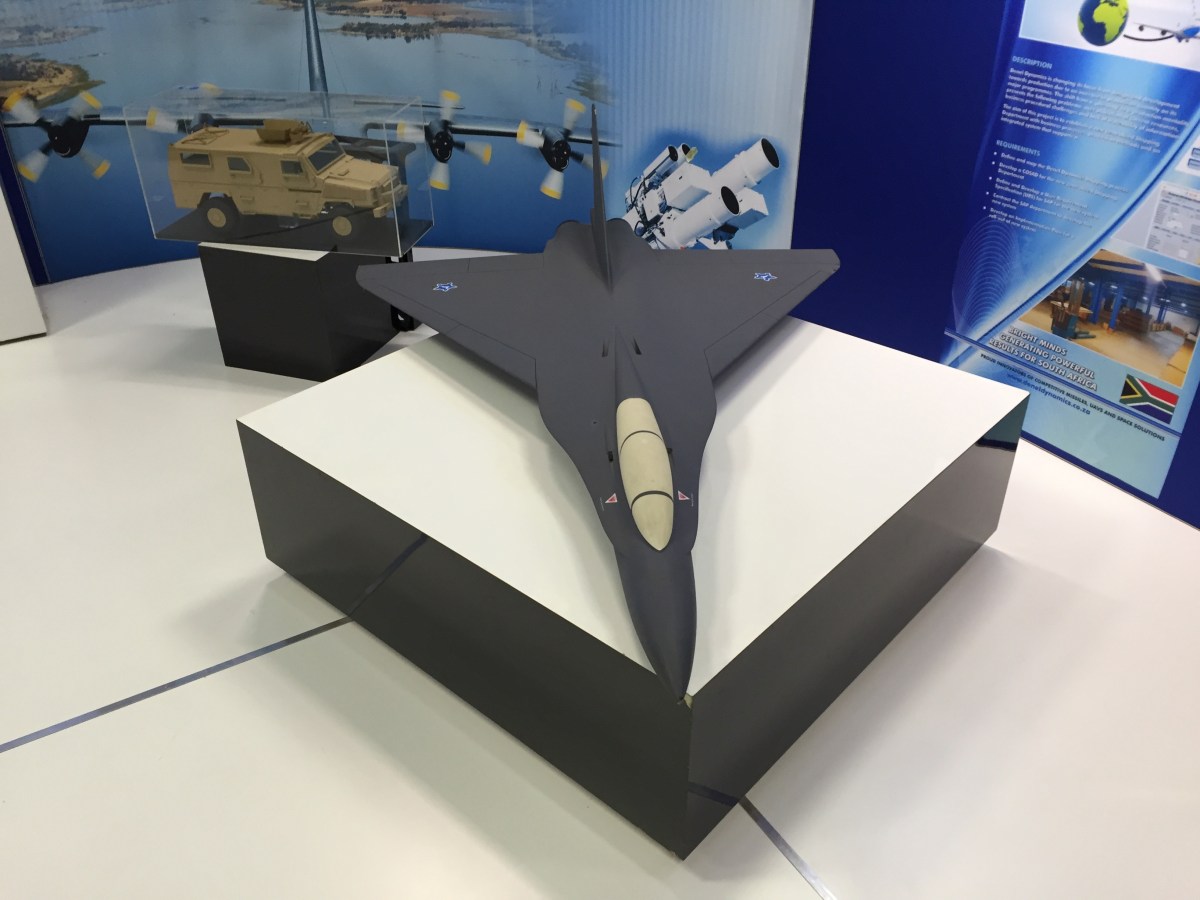
 www.africandefence.net
www.africandefence.net

Project Carver emerges from the shadows
Denel’s stand at the Rand Show held earlier this year featured an unexpected surprise: It was the first time ever that a twin-engined model of South Africa’s highly-classified indigenous jet fighte…
- Joined
- 27 March 2006
- Messages
- 1,873
- Reaction score
- 1,619
It's been posted on the Carver thread.
Does anyone know what the status of the SARA regional turboprop airliner is?
Does anyone know what the status of the SARA regional turboprop airliner is?
BLACK_MAMBA
ACCESS: Secret
- Joined
- 17 July 2019
- Messages
- 382
- Reaction score
- 879
You'll be interested in the following. Take a look at the starboard wing... Same span but longer chord with the leading edge being moved forward.Does anyone (Graugrun?) have any information on the ERW (Extended Range Wing) that was being worked on for the Atlas Aviation Impala?
As far as I am aware, the Mb-326 has a dry wing, if one excludes the piping from the wingtip and underwing fuel tanks.
I am surmising this was a redesigned wing with internal fuel?
Attachments
- Joined
- 27 March 2006
- Messages
- 1,873
- Reaction score
- 1,619
Thanks BM.
I note what appears to be a wingtip station for a missile.
I seem to recall one of the goals was to increase internal wing fuel, thus freeing up additional pylons for more weapons.
Cannot recall where I saw or read that.
If so, the above pictures make sense..
I note what appears to be a wingtip station for a missile.
I seem to recall one of the goals was to increase internal wing fuel, thus freeing up additional pylons for more weapons.
Cannot recall where I saw or read that.
If so, the above pictures make sense..
BLACK_MAMBA
ACCESS: Secret
- Joined
- 17 July 2019
- Messages
- 382
- Reaction score
- 879
Correct. The new wing used a supercritical aerofoil and was supposed to be wet. More range and higher cruise speed being the main advantages. The extra weapon station also being a big plus.Thanks BM.
I note what appears to be a wingtip station for a missile.
I seem to recall one of the goals was to increase internal wing fuel, thus freeing up additional pylons for more weapons.
Cannot recall where I saw or read that.
If so, the above pictures make sense..
This project doesn't sound like it advanced very far beyound basic windtunnel tests as times changed and the focus shifted to buying new aircraft (Hawk). Either way, glad the model is finally unveiled!
- Joined
- 27 March 2006
- Messages
- 1,873
- Reaction score
- 1,619
I hope this, and your wonderful pics of the Carver, presage more releases of pictures.
You can see the tail of the Carver in your 2nd pic.
I wonder if that Carver tail design would have some influence on a question I asked earlier...
Another poster on SAAF forum noted he had seen drawings or models of the end path of the upgraded Super Mirage F1 being worked on.
He stated that, among other tweaks (such as a 'Cheetah C style nose") the vertical fin or tail was to have an enlarged base ala the F16.
The Carver design, and research done on it, seems to perhaps be the inspiration behind some of these tweaks (like the Advanced Combat Wing for the Cheetah).
I had always wondered what that final Super Mirage F1 would look like...
You can see the tail of the Carver in your 2nd pic.
I wonder if that Carver tail design would have some influence on a question I asked earlier...
Another poster on SAAF forum noted he had seen drawings or models of the end path of the upgraded Super Mirage F1 being worked on.
He stated that, among other tweaks (such as a 'Cheetah C style nose") the vertical fin or tail was to have an enlarged base ala the F16.
The Carver design, and research done on it, seems to perhaps be the inspiration behind some of these tweaks (like the Advanced Combat Wing for the Cheetah).
I had always wondered what that final Super Mirage F1 would look like...
Last edited:
BLACK_MAMBA
ACCESS: Secret
- Joined
- 17 July 2019
- Messages
- 382
- Reaction score
- 879
The Super F1 always intrigued me too. The F1 windtunnel models with the LERX concepts are old Denel property so are probably gone to history. Not sure if those models include the new nose and enlarged fin base. I have been told with the LERX included the upgraded F1 would have required a FBW system. It sounds like the LERX were quite big based off that detail.I had always wondered what that final Super Mirage F1 would look like...
Lets hope one day these things get revealed...
- Joined
- 27 March 2006
- Messages
- 1,873
- Reaction score
- 1,619
An engineer who had worked on the Carver wing, as well as the ACW wing for Cheetah, also mentioned that the Mirage F1 leading edge slats were looked at, as these were speed limited in certain regimes, and thus a stronger design with an expanded envelope was looked at.
This was also when working on the leading edge devices for Carver.
The filter down of design ideas from Carver to the interim designs of the Super Cheetah and Super Mirage is interesting.
This was also when working on the leading edge devices for Carver.
The filter down of design ideas from Carver to the interim designs of the Super Cheetah and Super Mirage is interesting.
Last edited:
BLACK_MAMBA
ACCESS: Secret
- Joined
- 17 July 2019
- Messages
- 382
- Reaction score
- 879
Thanks for sharing - just to point out Rooivalk EDM was not really a "technology demonstrator that turned into Rooivalk". The XDM (eXperimental Demonstration Model) and ADM (Advanced Demonstration Model) were the concept & technology demonstrators for basic layout, weapons system concepts & options, avionics etc.Found this on a Discord channel
EDM or Engineering Demonstration Model was built as a representation of the final chosen design as it would go into production. They scaled back risk here too by incorporating lower risk items like an already qualified French gun & sights etc into it. I believe there still were some minor differences but by large it was on the level of the production run. That said, with a production run of only 12 airframes Rooivalk hardly was a mass produced helicopter anyway... ADM was untill recently used by Denel for Rooivalk related testing as it is their instrumented airframe too. Hasn't flown in a while unfortunately.
- Joined
- 27 March 2006
- Messages
- 1,873
- Reaction score
- 1,619
Just coming back to this..The Super F1 always intrigued me too. The F1 windtunnel models with the LERX concepts are old Denel property so are probably gone to history. Not sure if those models include the new nose and enlarged fin base. I have been told with the LERX included the upgraded F1 would have required a FBW system. It sounds like the LERX were quite big based off that detail.I had always wondered what that final Super Mirage F1 would look like...
Lets hope one day these things get revealed...
The Super Mirage F1 is an interesting subject.
I would love to see these F1 windtunnel models with LERX, as this implies the inner wing leading edge slats are modified, or removed entirely. Unless span itself was increased.
You can kind of envisage what some of the Super Mirage F1 modifications looked like by viewing other South African projects.
The turbofan flew already in an F1 airframe.
Nose and cockpit based on the Cheetah C..and indeed, as stated by an engineer on the SAAF forum, a high level of systems compatibility with the Cheetah C was a stated goal.
Enlarged fin base based on the Carver..
The wing design would be very interesting to see.
Last edited:
BLACK_MAMBA
ACCESS: Secret
- Joined
- 17 July 2019
- Messages
- 382
- Reaction score
- 879
What I have managed to scrounge together from people in the know (although I have no hard numbers), is that the aircraft would have received a plug between what seems to be Frames 17 and 18 (in the area where the aux air intakes are on the F1). The length of this plug is unknown to me. The inner leading edge flaps would have been shortend (losing some of the inner span) but no other wing changes were incorporated. Nose strakes were part of the upgrade but fitted to a standard F1 nose. What I have been told sounds like they only looked at how LERX would work on a modified "standard" aircraft.Just coming back to this..
The Super Mirage F1 is an interesting subject.
I would love to see these F1 windtunnel models with LERX, as this implies the inner wing leading edge slats are modified, or removed entirely. Unless span itself was increased.
You can kind of envisage what some of the Super Mirage F1 modifications looked like by viewing other South African projects.
The turbofan flew already in an F1 airframe.
Nose and cockpit based on the Cheetah C..and indeed, as stated by an engineer on the SAAF forum, a high level of systems compatibility with the Cheetah C was a stated goal.
Enlarged fin base based on the Carver..
The wing design would be very interesting to see.
Combined avionics and LERX studies were either a seperate study or were never done. The LERX study seems to have been done in the early 90's. In the era where defense funding in SA rapidly started drying up... Plus accounts go that the Rooivalk team had a lot of influence so they received the majority of the financial support.
- Joined
- 27 March 2006
- Messages
- 1,873
- Reaction score
- 1,619
BM, it's interesting to see the two-seater Mirage F1 has a 30cm extension in its fuselage, so I'd imagine it's something in that range.
The reference to that plug being around the auxiliary air intakes dovetails neatly to where a big difference is between the air-intercept radar F1C and ground-attack F1A is.
Behind the cockpit, the F1A has an additional fuel tank, as the some of the avionics have been shifted to the nose, as space was freed up with the smaller ranging radar.
In the F1C, that is filled with the bigger fighter radar.
The fellow over at the SAAF forum involved in the programme stated that a common configuration with the Cheetah C, or as he put it, with the Cheetah C nose, was the starting point.
He specifically mentioned the avionics and cockpit, which might be the displays.
But he also specifically added "the nose".
This implies to me that a common configuration, bringing the F1A and F1C to a common standard, including the cockpit and radar, from the Cheetah C, was very important.
This makes sense, as the radar of the F1C was beginning to be dated.
A common standard seems obvious, considering the deep modernisation considered wrt engine and structure. Attrition had reduced the fleet somewhat, so the common standard to the remaining 40 or so airframes, in line with Cheetah C, seems sensible.
No point in having limited numbers of different F1A and F1C aircraft.
It seems to me that the intended goal was a high degree of commonality between the Cheetah C and Super Mirage F1 fleets pending the introduction of Carver.
This common standard rebuild with common multi-role systems seems obvious to me, at least. It has big gains in many areas.
,
There is a surprisingly potentially easy cross-compatibility of systems between the Dassault models.
For example, as stated on that forum, a study was conducted on fitting leading edge slats from the Mirage F1 wing on to the delta wing of the Cheetah wing, which another engineer on that forum said fitted surprisingly well.
The fixed leading edge ACW though gave almost all of the gains of that, with vastly reduced costs and engineering.
The reference to that plug being around the auxiliary air intakes dovetails neatly to where a big difference is between the air-intercept radar F1C and ground-attack F1A is.
Behind the cockpit, the F1A has an additional fuel tank, as the some of the avionics have been shifted to the nose, as space was freed up with the smaller ranging radar.
In the F1C, that is filled with the bigger fighter radar.
The fellow over at the SAAF forum involved in the programme stated that a common configuration with the Cheetah C, or as he put it, with the Cheetah C nose, was the starting point.
He specifically mentioned the avionics and cockpit, which might be the displays.
But he also specifically added "the nose".
This implies to me that a common configuration, bringing the F1A and F1C to a common standard, including the cockpit and radar, from the Cheetah C, was very important.
This makes sense, as the radar of the F1C was beginning to be dated.
A common standard seems obvious, considering the deep modernisation considered wrt engine and structure. Attrition had reduced the fleet somewhat, so the common standard to the remaining 40 or so airframes, in line with Cheetah C, seems sensible.
No point in having limited numbers of different F1A and F1C aircraft.
It seems to me that the intended goal was a high degree of commonality between the Cheetah C and Super Mirage F1 fleets pending the introduction of Carver.
This common standard rebuild with common multi-role systems seems obvious to me, at least. It has big gains in many areas.
,
There is a surprisingly potentially easy cross-compatibility of systems between the Dassault models.
For example, as stated on that forum, a study was conducted on fitting leading edge slats from the Mirage F1 wing on to the delta wing of the Cheetah wing, which another engineer on that forum said fitted surprisingly well.
The fixed leading edge ACW though gave almost all of the gains of that, with vastly reduced costs and engineering.
Last edited:
BLACK_MAMBA
ACCESS: Secret
- Joined
- 17 July 2019
- Messages
- 382
- Reaction score
- 879
The commonality thing always intrigued me. If we reference the SAAF Cheetah D fleet we have Mirage IIIDZ, Mirage IIID2Z and Nesher T base airframes and even though Atlas did their best to bring them to a common standard but there were still enough differences that the people doing the services still had to get a Cheetah D, D2 or B manual.
I suspect we would still have a F1C and F1A even after upgrade although they would have done their best to get them close to the same standard.
Regarding the plug length, it sounded longer than the F1B length, closer to the Cheetah C plug in length although in a much more complex area. But as I said, I have no hard numbers.
I suspect we would still have a F1C and F1A even after upgrade although they would have done their best to get them close to the same standard.
Regarding the plug length, it sounded longer than the F1B length, closer to the Cheetah C plug in length although in a much more complex area. But as I said, I have no hard numbers.
Similar threads
-
-
-
South African Radar & EW and Communications Projects
- Started by Graugrun
- Replies: 128
-
South African Drones/RPV's/UAV's - Prototypes, projects, concepts etc.
- Started by Graugrun
- Replies: 80
-

